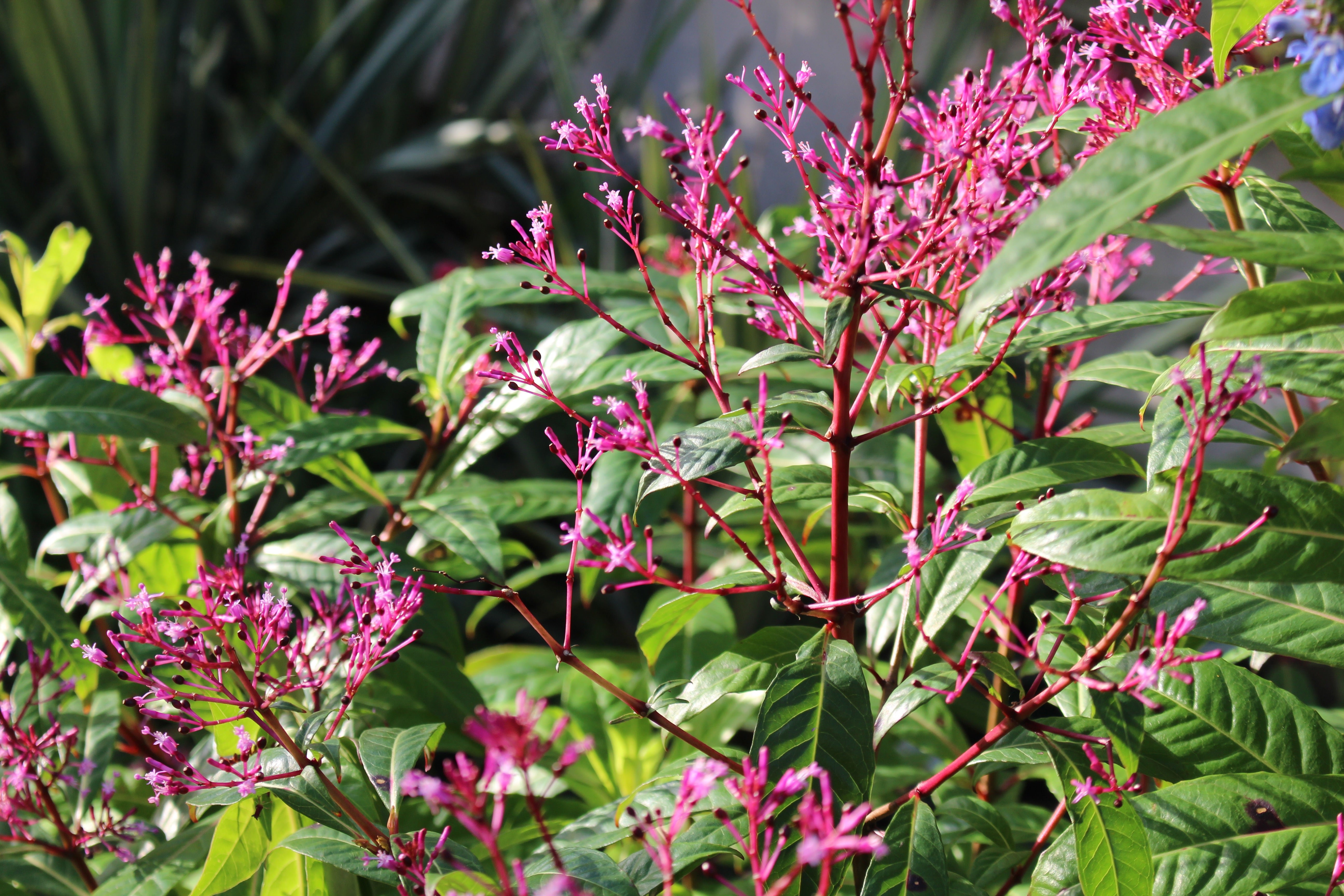Fuchsia arborescens
Approx. 0.5 litre pot
About this cultivar:
Fuchsia arborescens is an evergreen species that forms a large, woody bush covered with big panicles of bright pink flowers almost all year. The blooms are exciting even in the bud stage, starting out lilac-pink before bursting open to a softer pink. Even through it can grow huge, you may prune the plant to any size you wish. After flowering, it makes dark blue, grape-like berries that are edible – hence the common name Mexican Blueberry. They are mildly sweet, tasting sort of like kiwi fruit, but not as sweet.
Quite a spectacular plant but the RHS has it hardy to 5°C! (h1c)! So I have dutifully obeyed my promise to list as such. However I know people growing them by the coast successfully, so I expect they are hardy to -5°C.
- Position: Full sun, partial shade
- Soil: Almost any soil
- Flowers: July, August, September, October
- Other features: -
- Hardiness: H1c - Can be grown outside in the summer (5 - 10°C)
- Habit: Clump forming, bushy
- Foliage: Evergreen
- Height: 150 - 200 cm (5 - 6.6 ft)
- Spread: 150- 200 cm (5 - 6.6 ft)
- Time to full growth: 10 to 20 years
- Plant type: Herbaceous Perennial, Shrub, Tree
- Colour: Green, red
- Goes well with: Everything!
About this genus:
Fuchsia (few-che-a) is a genus of flowering plants that consists mostly of shrubs or small trees. There are over 110 recognized species. The first, Fuchsia triphylla, was discovered on the Caribbean island of Hispaniola (present day Dominican Republic and Haiti) about 1696 by the French monk and botanist, Charles Plumier during his third expedition to the Greater Antilles. He named the new genus after the renowned German botanist Leonhart Fuchs.
The Fuchsias we grow and sell are perennial and hardy - they are all growing away in our own garden. They are easy to grow once they are established - they will take almost any situation or soil that isn't too extreme. They provide continual flowers from July until late autumn, when the first frosts arrive. They come into their own in autumn because they enjoy cooler temperatures and shorter days. The Autumn light also enhances the rich mixture of pinks, reds, peaches and whites in the garden. Eventually most will die back for the winter - usually when a hard frost kills the upper part of the plant, however they will start growing from the base again when the next spring comes!
Fuchsias are versatile plants - although not native they have naturalized in many parts of this world, for instance along the beautiful Antrim Coast. They can often been seen growing wild. It is for this reason that I like them poking in and around hedges for a natural look. However the common use is as stand alone specimen plant - it is really up to you!


